Lighting design is an important part in the history of design, with high cultural value and aesthetic value. Italian lamps add luster to the development of lighting design. Many excellent works play an important positive influence on the later generations. Here we’d love to share some of the classic production for you:
照明设计是设计历史上重要的一环,具有极高的文化价值与美学价值。 意大利灯具为照明设计的发展增添光彩。不少优秀的作品设计源远流长,对后世起着重要的积极影响。以下是一些经典之作的分享:
Created for the Langelinie Pavilion, a modernist restaurant in Copenhagen, where it is still in use, this chandelier is one of the emblematic pieces of the work of Poul Henningsen, a great figure of Danish design: it is the culmination of deep research on the diffusion of light. It is said that his work with light and contemporary form were dictated by the desire to overcome the oil lamps of his childhood, hiding the light source. The basic version consists of 72 leaves arranged in an ‘artichoke’ or inverted camellia style, fixed on metal arches. The fragmentation of the surfaces means that the light source is not visible, while the lamp creates a soft diffused light, as was Henningsen’s intention. Over the years, several versions have been made with different materials and metals, including LED.这款吊灯是丹麦设计巨匠Poul Henningsen的代表作之一,是他为哥本哈根的现代主义餐厅Langelinie Pavilion设计的,目前该餐厅仍在使用。PH Artichoke体现出Henningsen在光漫射方面的造诣。据说,他之所以研究光线及其当代形态,是源自儿时改变昏暗油灯的愿望。这款灯具的基础版由72片灯叶组成,呈洋蓟或倒山茶花式排列并固定在拱形金属条上。错落有致的表面将光源包裹起来,形成柔和的漫射光,正符合Henningsen的意图。多年来,这款灯具已推出多个版本,分别用不同的材料和金属制成,其中也包含LED版本。
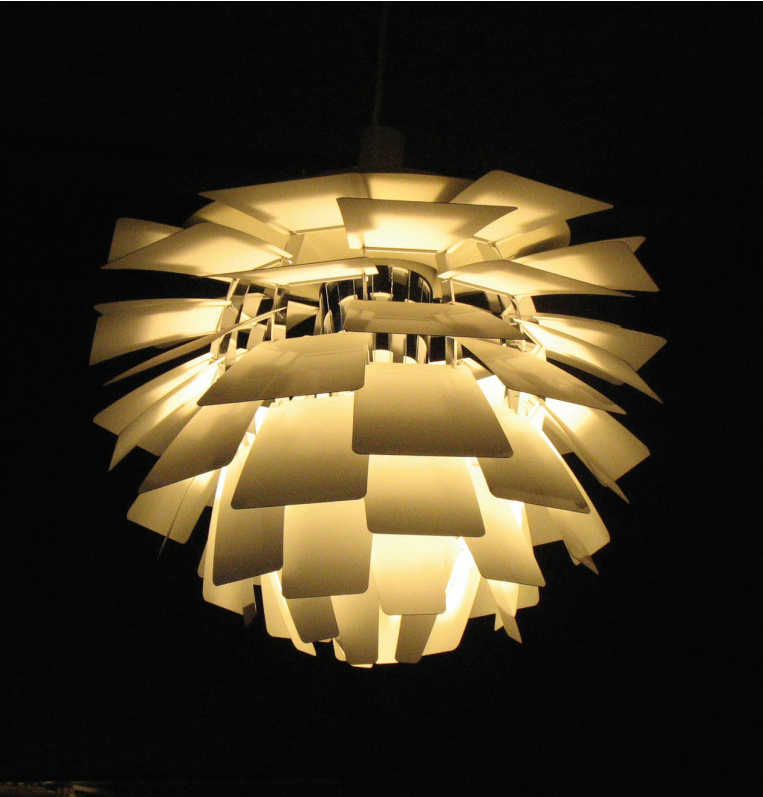
Colombo 281 is Joe Colombo’s first submission for Oluce, the only two-man project carried out in collaboration with his brother Gianni. The model, created in 1962 and which was initially known as 281, was later called Acrilica, referring to the main material of which this object is made (acrylics), as well as the extraordinary way it was used in the 281 lamp design. In fact, methacrylate had already been used for approximately a decade in the lighting sector, usually in thin cut or thermoformed sheets, while here it is used in an extremely distinctive way. Thanks to its conduction properties, both the shape and the significant thickness of the curve of the 281 lamp make it possible for the light of the fluorescent light bulb inside the painted steel base to travel up the transparent lamp structure, illuminating its head. In 1964, Acrilica won the gold medal at the 13th Triennale International Exhibition in Milan.
Acrilica 281是Joe Colombo向Oluce递交的首份作品,也是他与弟弟Gianni Colombo合作的唯一一个双人项目。这款灯具创作于1962年,最初被称为“281”,后更名为“Acrilica”,意指其主要材料(丙烯酸树脂)在该款灯具中的巧妙运用。事实上,早在Acrilica 281诞生的十年前,甲基丙烯酸酯已被应用于照明领域,通常用于薄切割或热成型的板材中,但Acrilica 281另辟蹊径。Acrilica 281利用了这种材料的导热性,呈现出恰到好处的形状和弧形厚度,使喷漆钢底座内荧光灯泡发出的光线能够沿着透明灯体向上传播,从而点亮灯具顶部。1964年,Acrilica 281在第13届米兰国际三年展上荣获金奖。
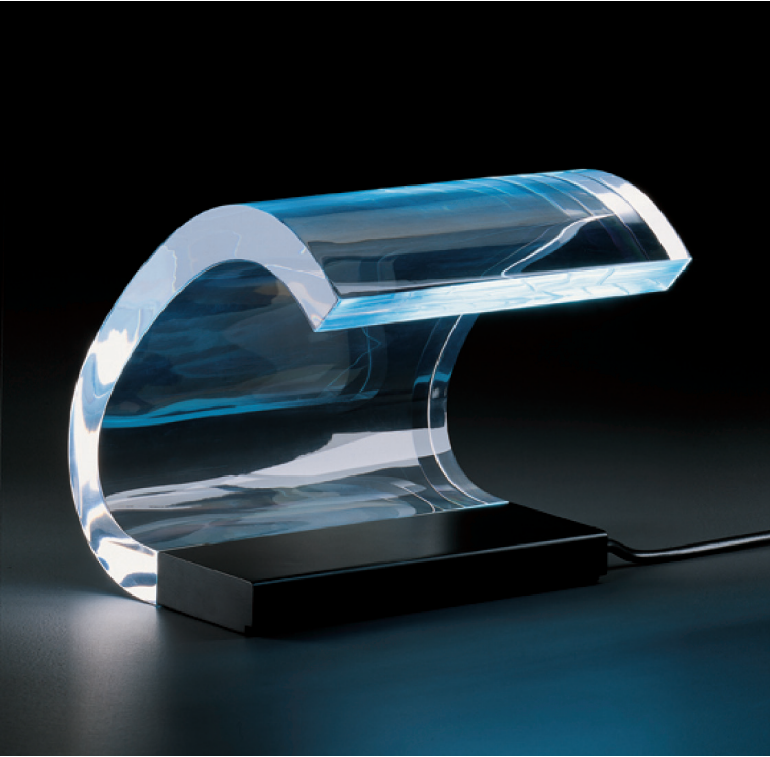
Designed by Le Corbusier in 1963 for the Chandigarh Parliament in India, Parliament lamp is a symbol of 1950s modernism, inspired by the industrial lighting of the time. Its elegant shape and great functionality are inspired by the Applique de Marseille wall lamp that Le Corbusier designed in 1954. Parliament is both elegant and functional: the floor lamp is made of painted aluminium and has an adjustable shade composed of two symmetrical open cones, providing two types of lighting (direct and indirect). Parliament is ideal as a reading light and for creating ambience lighting.
Parliament由Le Corbusier于1963年为印度昌迪加尔议会设计,是上世纪50年代现代主义的代表作,灵感源自当时的工业照明。这款灯具外形优雅、功能强大,延续了Le Corbusier于1954年设计的Applique de Marseille壁灯的精神内核。Parliament落地灯可谓内外兼修,采用喷漆铝制成,灯罩则是两个对称的开放锥体,可通过调节灯罩来切换直接或间接照明,堪称阅读灯或氛围灯的理想之选。
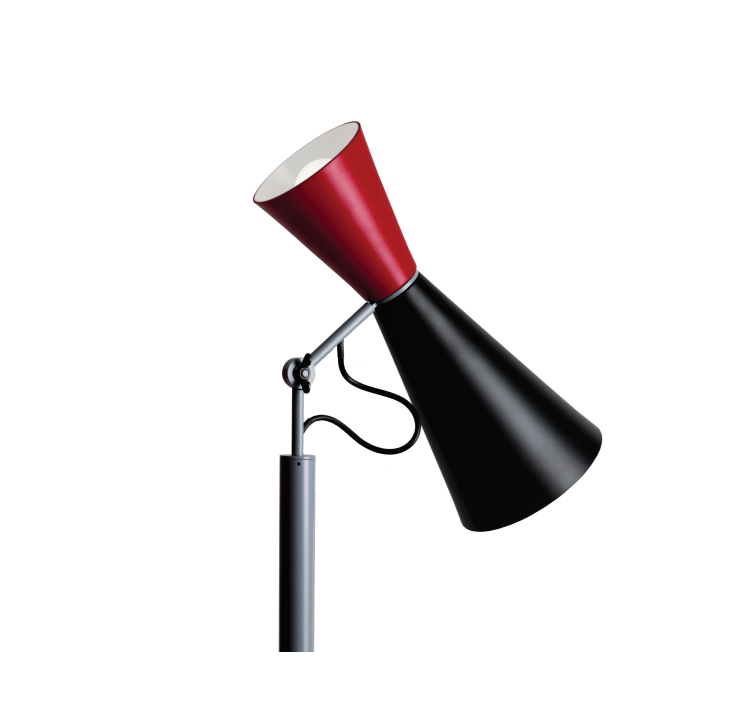
Eclisse is a cutting-edge balance between form and function, design and utility. The basis of the concept lies in its functionality, regulating the intensity of the light through its internal rotating lampshade that “eclipses” the light source, whose movement to screen the light is inspired by astronomical phenomena. The lamp is made up of three hemispheres: two fixed - the base and the outer shell - and one mobile, the inner shell, inserted into the outer one. The story of the Eclisse lamp begins on the Milan subway where Vico Magistretti was inspired to create a lamp combining two spheres and, in order not to forget the design concept, sketched it on the back of his ticket. Designed in 1965, it won the Compasso d’Oro in 1967, and has since become an icon of Italian design around the world. It is part of the permanent collection of the most important design museums, including MoMA in New York and the Triennale Design Museum in Milan.
Eclisse展现出形式与功能、设计与实用之间的完美平衡。其设计理念从功能性出发,通过内部的旋转灯罩遮蔽光源,实现对光线强度的调节,灵感汲取自天文现象。这款灯由两个固定半球(底座和外壳)以及一个可移动的半球(嵌入外壳的内胆)组成。Vico Magistretti在米兰搭乘地铁时灵光一现,想到结合两个半球制成灯具,于是将草图画在车票背面,以免忘记这个设计灵感。Eclisse设计于1965年,并于1967年赢得金罗盘奖,随后成为了享誉全球的意大利标志性设计。它被永久收藏于纽约现代艺术博物馆、米兰三年展设计博物馆等知名设计博物馆。
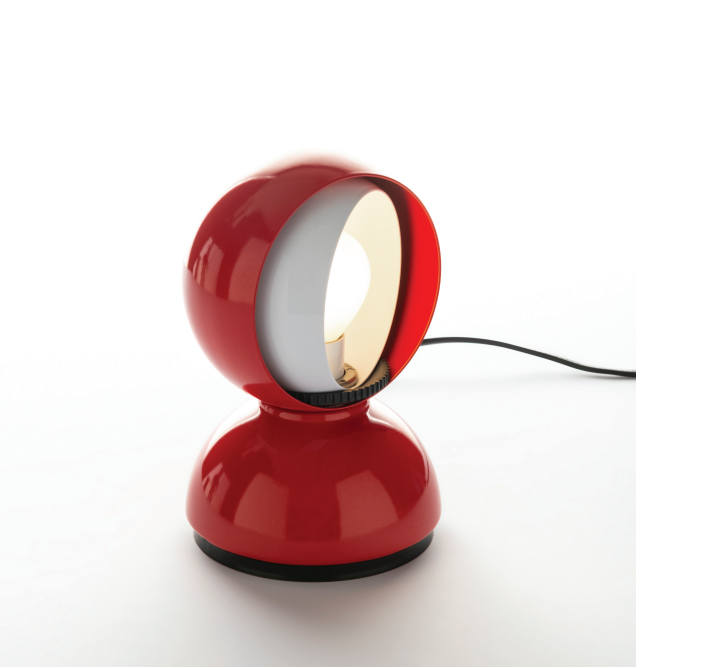
The sixties are characterised by some of the most innovative experiments with plastics, with objects distinguished by the use of strong shades and innovative shapes. Among these is the Nesso lamp, a marvel of thermoplastic injection molding in ABS (acrylonitrile-butadiene-styrene), introduced for the first time in 1967 by Artemide, thus bringing industrial materials and methods to the home and office. A touch of color and a design inspired by nature. Distinguished by its mushroom shape, the lamp reveals all the potential of plastic: it exploits the translucent quality of the material and diffuses a warm light, using the lampshade to hide the four bulbs. Nesso is part of the permanent collections of the Metropolitan Museum of Art and the Museum of Modern Art.
上世纪60年代,人们对塑料进行大规模创新实验,制成了色彩强烈、形状各异的物品,这其中就包括1967年由Artemide推出的Nesso灯具。Nesso使用ABS(丙烯腈-丁二烯-苯乙烯共聚物)制成,并开创性地采用了热塑性塑料注射成型技术,自此,工业材料及方法正式走进家庭和办公室。灯具上的一抹色彩及其设计灵感汲取自大自然。这款灯具巧妙发挥塑料的潜能,呈现出独特的蘑菇形。四只灯泡均隐藏在灯罩内,得益于材料的半透明性,灯具散发出温暖而柔和的光。Nesso被永久收藏于大都会艺术博物馆和现代艺术博物馆。
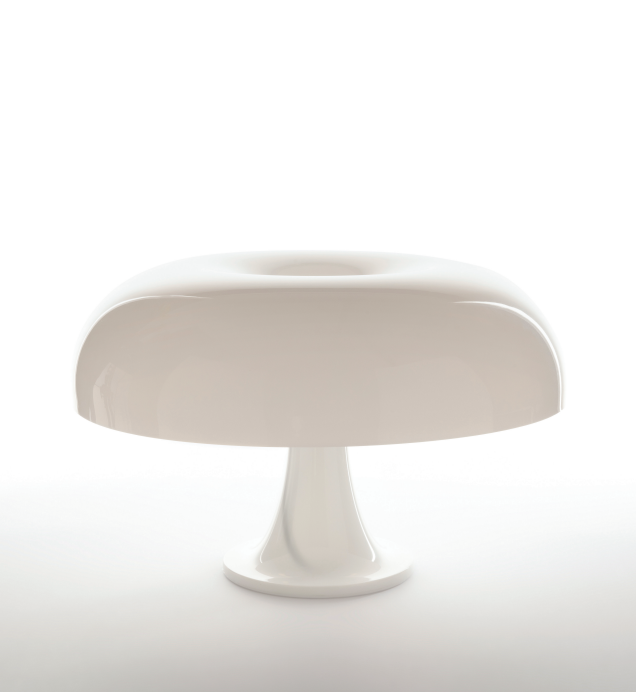
With this lamp Bruno Munari overturns all the canons of lamp design. A first new element is the use of filanca, a yarn used for women’s stockings, to replicate the aesthetic effect of the Japanese paper lanterns that inspired it with a more durable and practical result. Another unique element is the shape of the lamp which was not designed and then built, but arises from the tension of the knitted tube and the weight of metal rings: it is a spontaneous shape, generated solely by the tension of its internal forces. The name is said to be a tribute to the Falkland Islands, which lives mainly on fishing. The lamp recalls the traditional traps which apparently inspired Munari to insert the rings in the tubular shape. Designed as a suspension lamp, Falkland is also available in a floor version. Exhibited at MoMA in New York, today it is produced by Artemide.
Bruno Munari设计的Falkland颠覆了灯具设计的所有准则。其中一大创新在于采用了制作妇女长筒袜用的纱线“filanca”,在复刻日本纸灯美学效果的同时,打造出结实耐用的灯具。另一大创新元素是它的形状。这款灯具的形状并非是制作前提前设计好的,而是由针织长管的张力和金属环的重量共同决定的,是完全由内部张力自发形成的。据说灯的名称是为了致敬以捕鱼为生的福克兰群岛。Munari从传统捕鱼笼中汲取灵感,想到在管状灯体中插入圆环。Falkland有吊灯和落地灯两种版本,曾在纽约现代艺术博物馆展出,如今由Artemide公司生产。
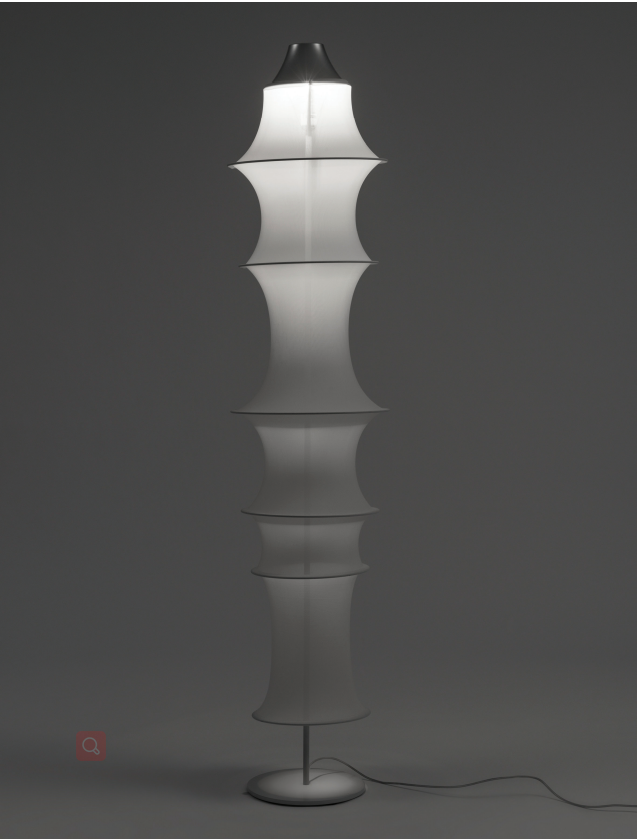
Falkland,Danese,1964年
设计师:Bruno Munari
Designed for the Olivetti store in Paris by the Italian architect and only later put into production, it is one of the first dynamic light lamps made. The telescopic stainless steel stem allows you to adjust the height of the lamp from 66 to 86 centimeters, transforming it into a table or floor lamp depending on the context. The name of this table lamp refers to the rigid opalescent white methacrylate diffuser that evokes a bat wing, aiming to reinterpret the classic Tiffany lampshades and pre-Bauhaus lamps in a contemporary and ironic way. The result is an unconventional lamp, an extraordinarily innovative project with a strong link to the past. It is part of the permanent collections of MoMA in New York.
Pipistrello由意大利建筑师为巴黎奥利维蒂商店设计,随后投入生产,是最早的动态照明灯具之一。采用伸缩式不锈钢灯杆,高度调节范围为66-86厘米,可根据需要作为台灯或落地灯使用。Pipistrello意指形似蝙蝠翅膀的漫射器,由坚硬的乳白色甲基丙烯酸酯制成。设计师希望以别出心裁的现代方式重新诠释经典蒂芙尼灯罩和前包豪斯灯具。这款灯具打破常规,兼具传统精髓和创新风格,被永久收藏于纽约现代艺术博物馆。
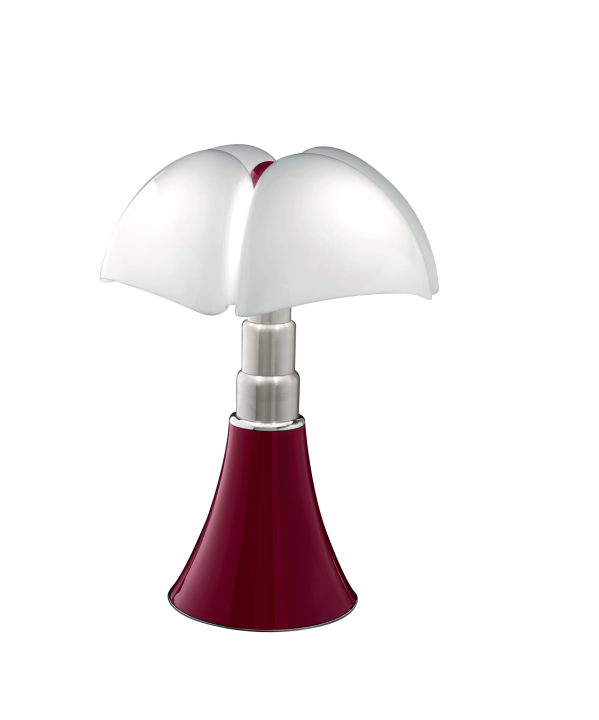
版权归广东奥马冰箱有限公司所有,转载请注明出处。































